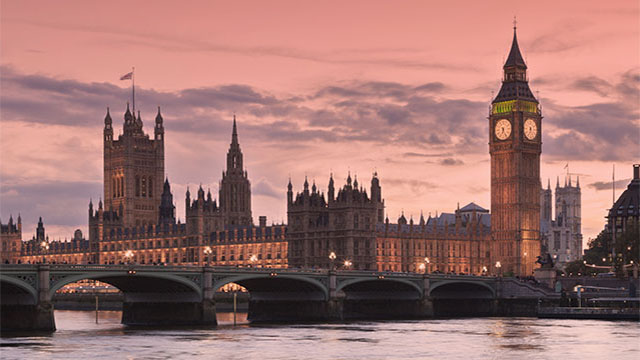Believe it or not, Chicago — birthplace of the skyscraper — is Birmingham’s sister city. Not that you could tell from looking at Birmingham’s distinctly low-rise skyline. Local business leaders argue that more high-rise buildings are necessary if the city is to reach new economic heights and, for once, the local authority agrees.
Clive Dutton, director of planning and regeneration at Birmingham council, admits: “The Birmingham skyline is very modest at the moment. We want to produce a stunning city landscape. The city centre is the engine room for the Midlands’ regional economy, and there’s a great opportunity to produce tall buildings in the city core.”
Sounds good. But developers who are tempted to rush to submit high-rise building applications will have to wait. The council is revising its planning policy framework as part of a 10-year masterplanning exercise to transform a 2,000-acre area within the city’s ring road. “We’re reassessing our tall buildings policy in light of the interest in them in recent years,” says Dutton. “We’re looking at where we want to cluster tall buildings, and asking how tall is tall?”
The city’s planners consider a tall building to be anything over 15 storeys, and policy allows for a maximum of 40 storeys — around half the height of the world’s tallest structures.
The council’s thoughts are unlikely to be revealed until this autumn at the earliest. In the meantime, it is staying tight-lipped about what could go where, although some early indications have already emerged (see box, p167).
Would-be skyscraper builders also need to be aware of more down-to-earth topographical matters.
“There’s a Civil Aviation Authority height restriction on Birmingham city centre, meaning that buildings cannot exceed 800ft above sea level,” explains Malcolm Gloster, regional senior partner at GVA Grimley.
Birmingham is built on a gradient, with its lowest point at 330ft above sea level, but the city-centre’s two-mile long ridge, which runs from Broad Street to Lancaster Circus, stands at 390ft, making true high-rise development tricky.
Tricky, but not impossible, as recent proposals show. In March, ROC International Towers announced that it is to build Birmingham’s tallest building, and Europe’s first high-rise theme park, within the Eastside regeneration area.
The £60m Birmingham Pinnacle will comprise a 570ft vertical entertainment centre located next to Millennium Point. The scheme will house a selection of theme park rides, and a restaurant and observation area with a bar/café at the top of a viewing tower. At street level, 50,000 sq ft of commercial space is planned.
Plans for the futuristic tourist attraction will be submitted in the summer. If they receive consent, ROC expects the scheme to open within two years.
Nearby, Richardson Cordwell is planning to build a landmark £100m, 38-storey residential tower comprising 350 flats and 20,000 sq ft of retail and leisure on Broad Street — Birmingham’s prime leisure pitch — close to the heart of where the council wants to see a cluster of high-rise development.
Both schemes will pave the way for more tall buildings in the city.
Arguably, however, it is at the £400m, 2m sq ft mixed-use Arena Central development that the future direction of Birmingham’s high-rise ambitions is likely to emerge.
Joint venture partners Miller Developments, Bridgehouse Capital and Dandara have appointed world-renowned US architect Eric Kuhne to design the centrepiece, a striking residential tower of up to 50 storeys to be called Arena Square Tower.
Its construction, alongside that of the Birmingham Pinnacle, could start a competition over which structure will become the tallest building in the UK outside London.
Kuhne has an enviable pedigree as designer of high-profile schemes worldwide, including what will be the world’s tallest building — the 3,284ft Mubarak Al Kabir Tower in the new City of Silk in Kuwait. He also designed the Bluewater shopping centre in Kent.
Speaking exclusively to EG about Arena Central, he says: “Birmingham has designated Arena Square as a place for towering identity. The borrowed landscape of motorway approaches will use these towers as much as centring devices as navigational guides as one approaches the city. This is a rare moment in Birmingham’s history, when all things coincide to produce what will be the finest collection of towers in the UK.”
He adds: “Around eight or nine towers are earmarked for the site. It’s where the council has decided it wants a composite skyline. The former Carlton TV studios site will allow a new, dense centre for Birmingham.”
Kuhne says Arena Central will be completely different from other UK high-rises.
The Arena Square Tower will have an instantly recognisable silhouette that Kuhne says will become part of Birmingham’s identity. The tower has been designed to complement the neighbouring Alpha Tower, with the two schemes looking like “brother and sister,” he says.
Andrew Wagstaff, director at Dandara, says: “Outline planning consent allows for between 45 and 50 storeys, but there is the ability to go slightly higher.”
Kuhne adds: “We’re linking the facade elements to the intricacy and grace of some of the finer buildings around Victoria Square. We’re using clear glass so the windows don’t look black. The glass will glow at night, and the roof will be distinctive with an unusual profile that will also be illuminated. It’s a reserved but lyrical design — a signature piece for the developers and Birmingham.”
It might even be one in the eye for Chicago.
|
High-rise gateway sites: rooms with views |
|
Ten buildings of between 20 and 50 storeys are either going ahead or in Birmingham’s development pipeline. Schemes that could also see high-rise development include Martineau Galleries, where a residential tower is proposed, and New Street station. The council will encourage high-rise development at seven key gateway points around the city: Fiveways, Holloway Circus, Bristol Street (intersection with the ring road), Lancaster Circus, Snow Hill, New Street station and where Eastside meets the city core at Masshouse. We asked the agents to give their views on tall buildings in Birmingham “Building towers will only be worthwhile if Birmingham’s transport system is improved and modernised to cope with the influx of people. The city needs to bring forward its plans for the metro tram system as soon as possible, and also the modernisation of New Street Station, without which Birmingham will always lag behind.” Adrian Watson, Cobbetts “Birmingham has more tall buildings over 20 storeys than Manchester — 44 compared with 12 respectively. However, Manchester’s open-door policy means it has 12 tall buildings in its development pipeline so, in the next five years, Manchester stands to get state-of-the-art schemes that will set the pace in the regional market for tall buildings.” Martyn Markland, Atisreal (Manchester) “It would be a mistake to build too many tall buildings. We need to keep them exclusive, otherwise what’s the attraction? Iconic buildings will help sell Birmingham nationally and internationally.” Geoff Thomas, DTZ “Chicago has been successful because of the quality of its tall buildings. Birmingham could emulate this success by insisting on high-quality architecture, regardless of height. Birmingham has begun to raise its profile with projects like Selfridges. Other buildings with similar visual impact would continue this trend.” Ross Wimer, Skidmore |










